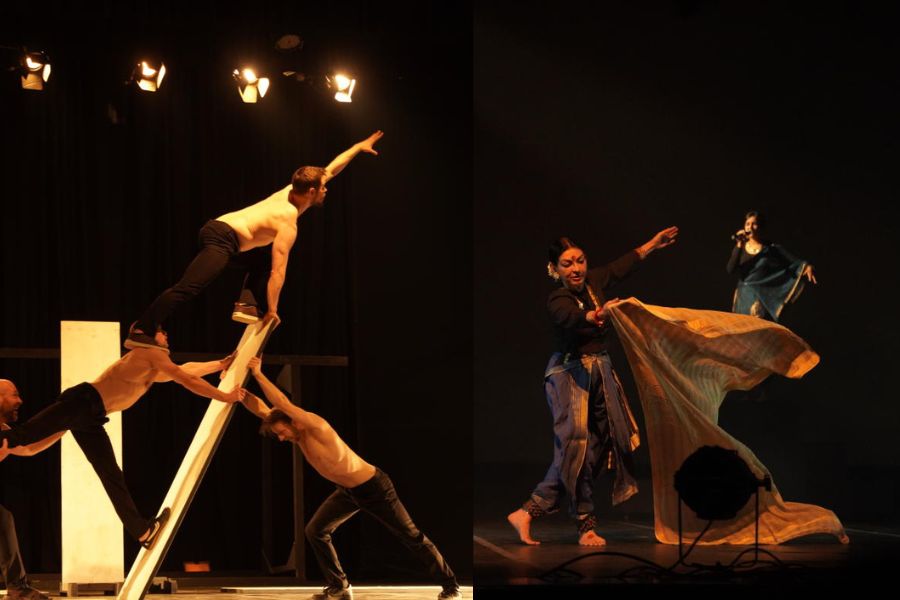Pickle Factory Season 4 was a month of engagements, dialogues, conversations and performances related to dance. Impressively catholic in its curation, the festival, spread over several venues, made a splash with varied works from India and abroad. If some of the performances were close, immersive encounters, others played out on a bigger stage. It was not only about what dance is but also about what dance could be.
A contemporary performance from Helsinki, Johnny Got His Gun, based on Dalton Trumbo’s 1939 anti-war novel of the same name and presented at the Kolkata Centre for Creativity, was explosively provocative. It is a solo performance, created jointly by Johannes Holopainen, Essi Rossi and Pauli Riikonen, that stridently questions the necessity of war. Sounds from battlefields and stirring speeches by heads of States declaring war reverberated in Riikonen’s incredibly evocative soundscape. The piece is a compelling argument against war that makes itself relevant to the 21st century with allusions to contemporary world politics and current conflicts. Seen through the lens of a young soldier, Joe Bonham, wounded in war, it speaks about his past life, his dreams and disillusionments, and explores his anguish and trauma. As he lies on his hospital bed, mangled, voiceless and without the power to attract the attention of the nurse, he speaks about his life in fitful monologues. Holopainen convincingly inhabits the mutilated body of Joe and draws the audience into his story in a powerful performance.
Presented by Pickle Factory and ArtsForward at the New Town Community Zone under the New Town Flyover, Rhythm and Intoxication by the Austrian outfit, CieLaroque, was a high-energy, improvisational intervention before an astonished audience of passers-by. An ever-swelling local community was witness to an extraordinarily fascinating performance in which the audience was hypnotically drawn in to interact, perform, enjoy and be a part of an hour of animated entertainment that totally transformed the space. The dance was engaging and accessible, as street dance needs to be, and the warm, light-hearted, comical banter of the performers was winningly charming. The piece redefined the relationship between the viewer and the viewed, blurring lines and examining voyeurism in new ways.
Walk-Man by Don Gnu of Denmark at G.D. Birla Sabhagar (picture, left) — presented by Pickle Factory in collaboration with Sanskriti Sagar — was intensely physical, thrilling and uproariously funny. It is about four men walking at a crossroads and submitting to pedestrian norms until one of them bursts into a rebellious, rule-breaking spree and throws the system off-kilter. The narrative force of the work is engaging and the stunts are jaw-dropping. The performance is honed and compelling and the dancers’ impeccable control of weight and dynamics is visually enchanting. Doffing a hat to Bollywood, the dancers threw in a dazzling choreography of a Bollywood number.
Mallika Sarabhai’s Past Forward (picture, right), the final offering of the season, touted as a contemporary Bharatanatyam performance, suffered from a singular lack of direction. In its examination of the emergence of the female voice in dance, it raised the glimmerings of some important questions but failed completely to answer them. She mentioned caste in passing, but did not explore the exclusionary politics of Bharatnatyam. As a feminist argument, the idea of ‘adjusting’ fell flat without the necessary build-up. One was not sure why Rabindrasangeet was used, nor was there any context to having a singer on stage.










